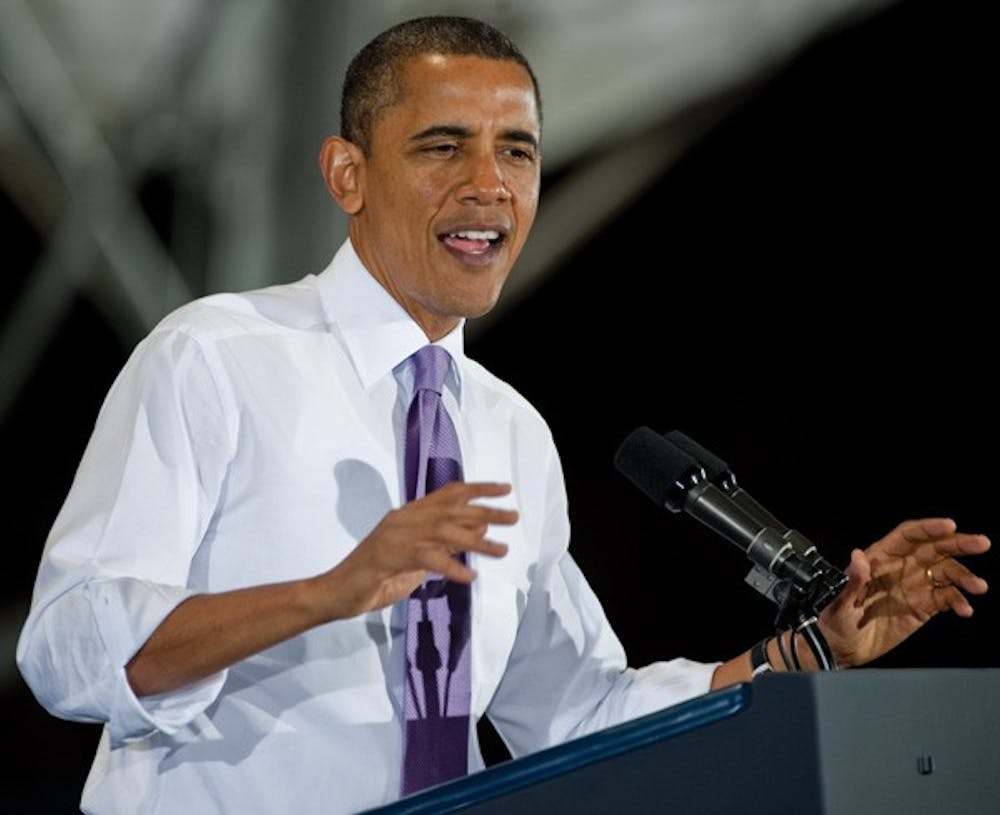President Barack Obama discussed the importance of higher education and college affordability Wednesday in a conference call with college journalists from across the country which included The Cavalier Daily. Secretary of Education Arne Duncan participated in the call as well, and Under Secretary of Education Ted Mitchell and James Kvaal, deputy director of the Domestic Policy Council, later joined him for a Q&A session with the roughly 50 journalists.
The conference call follows a presidential memorandum — which is being called the “Student Aid Bill of Rights” — signed by Obama Tuesday morning, directing the Department of Education and other federal agencies to ease loan payment burdens on student borrowers. The bill states that every student borrower deserves access to affordable, world-class education, and the means to pay for a higher education with an affordable payment plan and fair, first-rate customer service.
Obama said achieving this goal will require effort across the board, but that the memorandum will serve as guidance.
“We’re going to have to do things at the federal level, state level, at the university level, to really mobilize the entire country around the issue of college affordability,” Obama said. “To help us do that, I released what I am calling a ‘Student Aid Bill of Rights,’ which declares some simple values that we want everyone to sign up for.”
According to the memorandum, the Department of Education must create a new system by July 2016 through which borrowers can file federal student aid complaints. Duncan said the department must also raise standards for banks servicing federal loans and ensure debt collectors actively assist borrowers who have difficulty repaying the loans.
The bill also details a more centralized loan payment system, what Mitchell said would be an integrated database easily allowing borrowers to check the balances of all their student loans and to make choices as to how best to allocate payments across those debts.
Obama first outlined the bill Tuesday at Georgia Tech where he told an estimated 10,000 students and guests that his commitment to increasing higher education affordability comes in part from personal experiences with financial aid programs — scholarships, student loans, and work-study — to which he attributes much of his academic success.
“I believe that higher education, as you believe, is one of the best investments that anybody can make in their future,” Obama said. “And it’s also one of the best investments you can make in our country’s future…Higher education has never been more important, but it’s also never been more expensive.”
The White House reports there are more than 40 million Americans with student loans, and that 70 percent of those earning a bachelor’s degree leave school with debt, averaging $28,400 between public and non-profit colleges.
The president’s recent directive builds upon his earlier initiatives such as increasing the maximum Pell Grant by $1,000, creating the American Opportunity Tax credit and instituting a cap on student loan payments at 10 percent of income.
Duncan said the student bill of rights is also in many ways a continuation of the president’s free community college proposal, which was presented during his January State of the Union address and aimed to reduce the overall cost of higher education. Duncan said Congressional approval would be required to secure funding for the bill.
“We need Congress to partner with us on [the free community college proposal], and that on the front end could help reduce the cost of college by 30, 40, 50 percent if that were to become law,” Duncan said. “The goal here is not just to reduce the burden of debt, but to reduce the cost of college.”
Mitchell said the bill aims at supplementing all sectors of higher education — public and private — and reducing costs through institutional competition and transparency.
“As we talk about pulling costs down, institutions are going to need to respond to other institutions that are bringing their costs down,” Mitchell said. “Another incentive is simple transparency and visibility — you have probably have taken a look at our college scorecard that allows prospective students to know what the average price is of colleges and universities that they would be interested in applying to, and we think that that transparency plus a little healthy competition is going to influence all sectors of higher education.”
Increased state investments in higher education can also reduce the costs of college, Duncan said. In Virginia, however, Gov. Terry McAuliffe plans to cut $45 million from state higher education during the fiscal years 2015 and 2016, and the University’s reduction amounts to an $8.1 million cut each year. There are an estimated one million borrowers with outstanding direct or FFEL loans in Virginia as of Jan. 2015, totaling $30 billion in outstanding balances.
The Department of Education and the president’s vision going forward is to think of education in terms of “pre-K-14” instead of the traditional K-12 paradigm, Duncan said. The vision is bipartisan and stems from educational initiatives in the traditionally Republican states of Oklahoma and Tennessee, he added.







